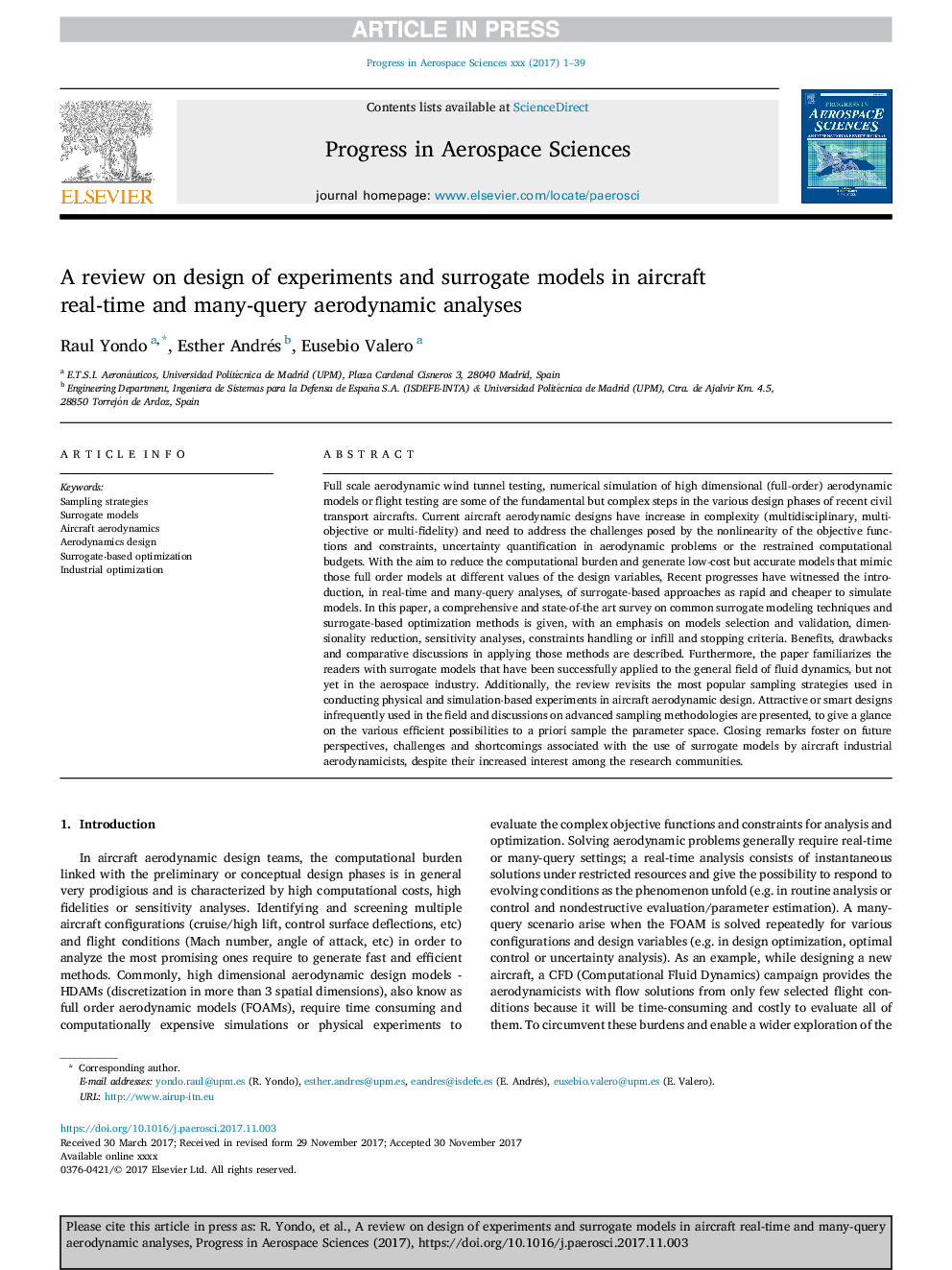| Article ID | Journal | Published Year | Pages | File Type |
|---|---|---|---|---|
| 8059085 | Progress in Aerospace Sciences | 2018 | 39 Pages |
Abstract
Full scale aerodynamic wind tunnel testing, numerical simulation of high dimensional (full-order) aerodynamic models or flight testing are some of the fundamental but complex steps in the various design phases of recent civil transport aircrafts. Current aircraft aerodynamic designs have increase in complexity (multidisciplinary, multi-objective or multi-fidelity) and need to address the challenges posed by the nonlinearity of the objective functions and constraints, uncertainty quantification in aerodynamic problems or the restrained computational budgets. With the aim to reduce the computational burden and generate low-cost but accurate models that mimic those full order models at different values of the design variables, Recent progresses have witnessed the introduction, in real-time and many-query analyses, of surrogate-based approaches as rapid and cheaper to simulate models. In this paper, a comprehensive and state-of-the art survey on common surrogate modeling techniques and surrogate-based optimization methods is given, with an emphasis on models selection and validation, dimensionality reduction, sensitivity analyses, constraints handling or infill and stopping criteria. Benefits, drawbacks and comparative discussions in applying those methods are described. Furthermore, the paper familiarizes the readers with surrogate models that have been successfully applied to the general field of fluid dynamics, but not yet in the aerospace industry. Additionally, the review revisits the most popular sampling strategies used in conducting physical and simulation-based experiments in aircraft aerodynamic design. Attractive or smart designs infrequently used in the field and discussions on advanced sampling methodologies are presented, to give a glance on the various efficient possibilities to a priori sample the parameter space. Closing remarks foster on future perspectives, challenges and shortcomings associated with the use of surrogate models by aircraft industrial aerodynamicists, despite their increased interest among the research communities.
Related Topics
Physical Sciences and Engineering
Engineering
Aerospace Engineering
Authors
Raul Yondo, Esther Andrés, Eusebio Valero,
